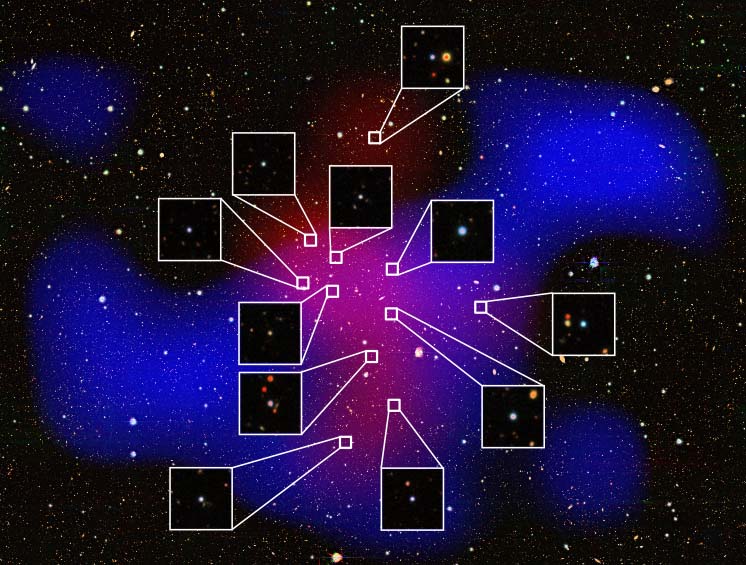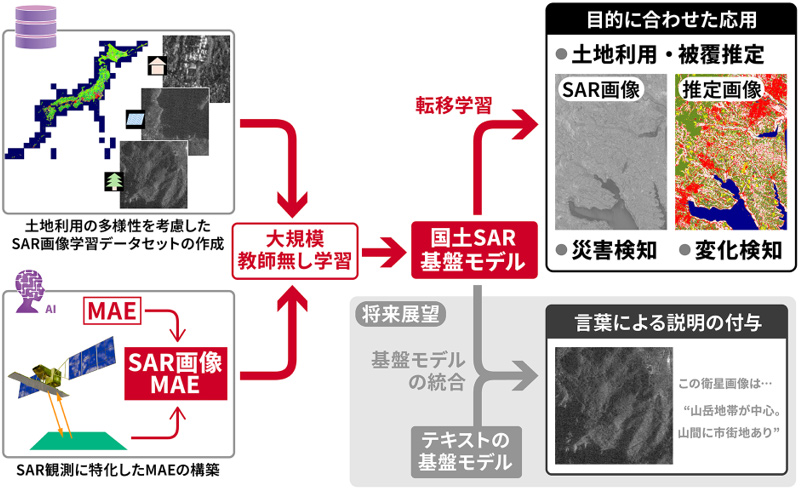2025-06-03 国立天文台

「宇宙のヒマラヤ」。黄色の×印はクエーサーの位置、黒色の等高線は銀河の密度を示します。背景の色は、赤いほど中性水素ガスの密度が高く、青いほど電離ガスが豊富であることを示します。つまり、左側の銀河集団には中性ガスが、右側の銀河集団の周りには電離ガスが集中していることが分かります。灰色の領域は、画像のモザイク処理が不完全だったり、明るい星の光の影響が強かったりしたために、データとして使えなかった部分です。(クレジット:国立天文台 / SDSS, Liang et al.)
<関連情報>
- https://www.nao.ac.jp/news/science/2025/20250603-subaru.html
- https://subarutelescope.org/jp/results/2025/06/02/3558.html
- https://arxiv.org/abs/2404.15963
宇宙ヒマラヤ:1万度の領域で最高密度のクエーサーピークが発見される2銀河、クエーサー、IGM HI 間の空間的な矛盾がある空 Cosmic Himalayas: The Highest Quasar Density Peak Identified in a 10,000 deg2 Sky with Spatial Discrepancies between Galaxies, Quasars, and IGM Hi
Yongming Liang, Masami Ouchi, Dongsheng Sun, Nobunari Kashikawa, Zheng Cai, Sebastiano Cantalupo, Kentaro Nagamine, Hidenobu Yajima, Takanobu Kirihara, Haibin Zhang, Mingyu Li, Rhythm Shimakawa, Xiaohui Fan, Kei Ito, Masayuki Tanaka, Yuichi Harikane, J. Xavier Prochaska, Andrea Travascio, Weichen Wang, Martin Elvis, Giuseppina Fabbiano, Junya Arita, Masafusa Onoue, John D. Silverman, Dong Dong Shi, Fangxia An, Takuma Izumi, Kazuhiro Shimasaku, Hisakazu Uchiyama, Chenghao Zhu
arXiv last revised 20 Mar 2025 (this version, v2)
DOI:https://doi.org/10.48550/arXiv.2404.15963
Abstract
We report the identification of a quasar overdensity in the BOSSJ0210 field, dubbed Cosmic Himalayas, consisting of 11 quasars at z = 2.16 − 2.20, the densest overdensity of quasars (17σ) in the ∼10,000 deg2 of the Sloan Digital Sky Survey. We present the spatial distributions of galaxies and quasars and an Hi absorption map of the intergalactic medium (IGM). On the map of 465 galaxies selected from the MAMMOTH-Subaru survey, we find two galaxy density peaks that do not fall on the quasar overdensity but instead exist at the northwest and southeast sides, approximately 25 h −1 comoving-Mpc apart from the quasar overdensity. With a spatial resolution of 15 h −1 comoving Mpc in projection, we produce a three-dimensional Hi tomography map by the IGM Lyα forest in the spectra of 23 SDSS/eBOSS quasars behind the quasar overdensity. Surprisingly, the quasar overdensity coincides with neither an absorption peak nor a transmission peak of IGM Hi but lies near the border separating opaque and transparent volumes, with the more luminous quasars located in an environment with lesser IGM Hi. Hence remarkably, the overdensity region traced by the 11 quasars, albeit all in coherently active states, has no clear coincidence with peaks of galaxies or Hi absorption densities. Current physical scenarios with mixtures of Hi overdensities and quasar photoionization cannot fully interpret the emergence of Cosmic Himalayas, suggesting this peculiar structure is an excellent laboratory to unveil the interplay between galaxies, quasars, and the IGM.



